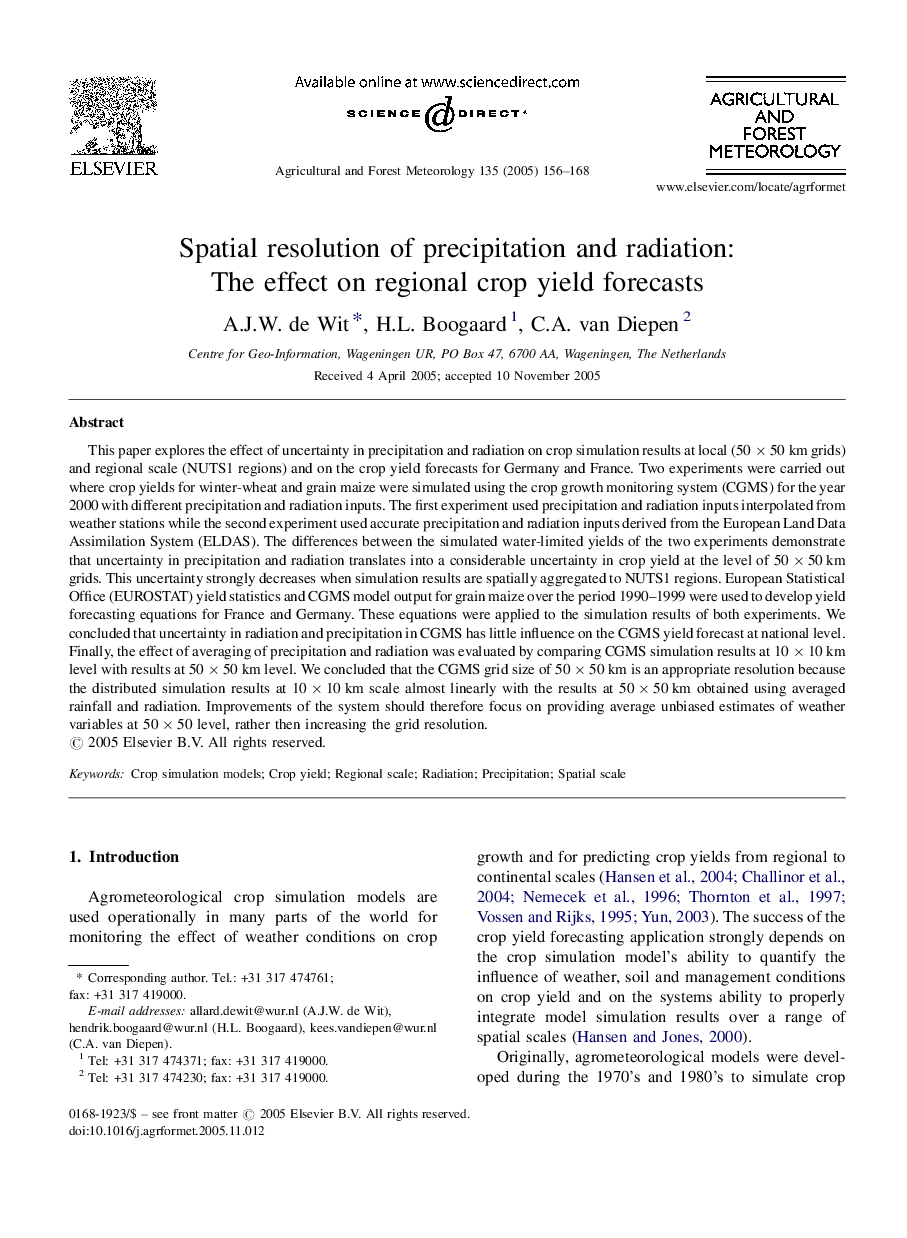| Article ID | Journal | Published Year | Pages | File Type |
|---|---|---|---|---|
| 9619384 | Agricultural and Forest Meteorology | 2005 | 13 Pages |
Abstract
This paper explores the effect of uncertainty in precipitation and radiation on crop simulation results at local (50Â ÃÂ 50Â km grids) and regional scale (NUTS1 regions) and on the crop yield forecasts for Germany and France. Two experiments were carried out where crop yields for winter-wheat and grain maize were simulated using the crop growth monitoring system (CGMS) for the year 2000 with different precipitation and radiation inputs. The first experiment used precipitation and radiation inputs interpolated from weather stations while the second experiment used accurate precipitation and radiation inputs derived from the European Land Data Assimilation System (ELDAS). The differences between the simulated water-limited yields of the two experiments demonstrate that uncertainty in precipitation and radiation translates into a considerable uncertainty in crop yield at the level of 50Â ÃÂ 50Â km grids. This uncertainty strongly decreases when simulation results are spatially aggregated to NUTS1 regions. European Statistical Office (EUROSTAT) yield statistics and CGMS model output for grain maize over the period 1990-1999 were used to develop yield forecasting equations for France and Germany. These equations were applied to the simulation results of both experiments. We concluded that uncertainty in radiation and precipitation in CGMS has little influence on the CGMS yield forecast at national level. Finally, the effect of averaging of precipitation and radiation was evaluated by comparing CGMS simulation results at 10Â ÃÂ 10Â km level with results at 50Â ÃÂ 50Â km level. We concluded that the CGMS grid size of 50Â ÃÂ 50Â km is an appropriate resolution because the distributed simulation results at 10Â ÃÂ 10Â km scale almost linearly with the results at 50Â ÃÂ 50Â km obtained using averaged rainfall and radiation. Improvements of the system should therefore focus on providing average unbiased estimates of weather variables at 50Â ÃÂ 50 level, rather then increasing the grid resolution.
Related Topics
Physical Sciences and Engineering
Earth and Planetary Sciences
Atmospheric Science
Authors
A.J.W. de Wit, H.L. Boogaard, C.A. van Diepen,
